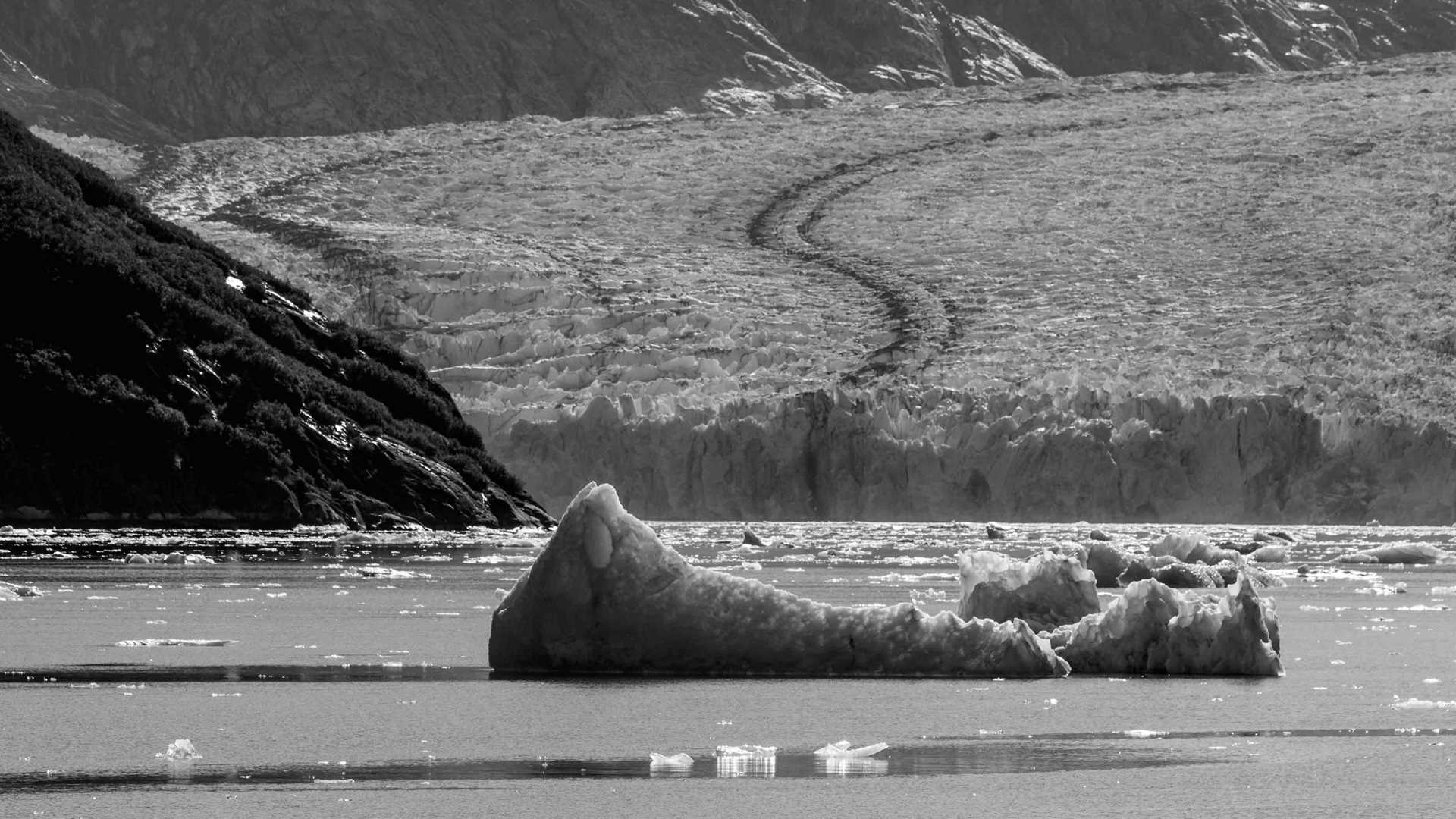What a glorious day! We awoke to clear skies and saw naught but a few cloudy flecks through sunset.
At dawn we entered Endicott Arm. Like all salty bodies in southeast Alaska, this is a fjord, but it is one of the most intense in the region. This is because Endicott, like Rudyerd Bay, cuts so far into the coast that it lies in granite and related rocks. Glaciers carve these rocks into the most beautiful forms. Huge domes towered over us; great cliffs, grooved by the passage of the glacier’s stony belly, rose hundreds of feet from the waves. Dozens of frothy falls tumbled through the trees. Mountainous horns pierced the sky and glaciers filled alpine valleys, and one, at least, touched the sea. Icebergs floated in water colored a beautiful milky jade. More and more bergs appeared until we could see the glacier in the distance. At that, we dropped boats for an intimate view of the ice. We sped by bergs inspiring notions of many a sea creature. We saw icy swans, whales or dragons. Some bergs were huge, blue and hoary, scalloped or pierced into endless sculptures. And at last we approached the glacier: Dawes Glacier flows five icy miles from the Stikine Icefield, and its face is three-quarters on a mile wide, and at least twenty stories high. And from this face we saw great chunks of ice fall, splashing up fountains of spray, roaring, and rocking our boats in vast but gentle swells.
Imposing though this landscape may be, it is home to some creatures. We saw a smattering of seals, ready to bear pups on the bergs, as well as scores of Arctic terns, scarlet feet all but wet with Antarctic water, perched daintily on the ice.
The lower reaches of Endicott Arm are full of life as well. We passed a couple of whales, and slowed to watch a milk-chocolate-colored brown bear browsing on vegetation near the waterline.
And at last we entered Stephens’ Passage, and turned north, toward Alaska’s… Glacier Bay.









